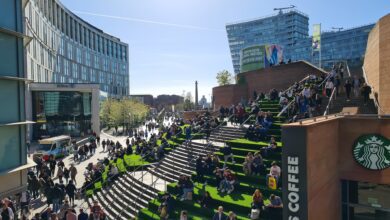The pandemic hasn’t killed footfall analysis
Diane Wehrle, insights director at Springboard, discusses the all-encompassing benefits of footfall analysis, and why it has remained key even as e-commerce trends soar

The global pandemic and rising e-commerce seem intrinsically linked, with Covid-19 billed as the virus that inadvertently killed our already ailing high streets. Surely, then, as retailers shift their efforts online footfall analysis is becoming an increasingly irrelevant way to analyse British businesses’ operations both physically and digitally? Well, perhaps not.







